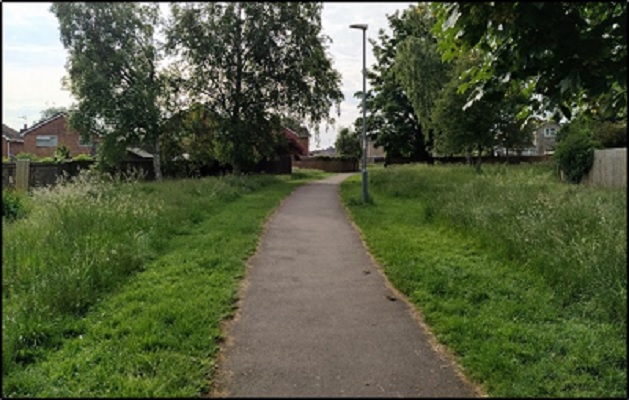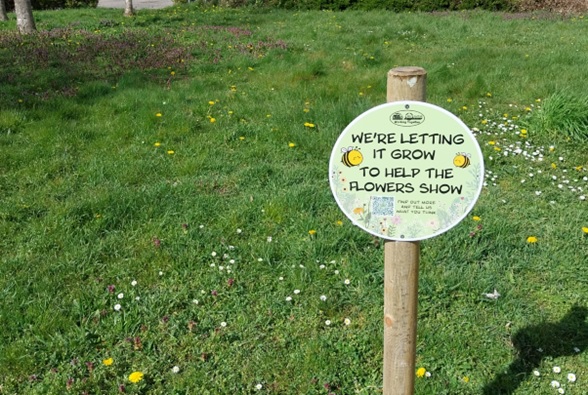Areas of meadow can often be produced by changing mowing regimes on open spaces and verges. This encourages wildflowers and grass to grow.
Where it is safe to do so - for example, in areas where driver visibility is not affected - we are reducing grass cutting on some verges and open spaces that we are responsible for.
When we let the grass grow naturally, we are able to see which flowers appear.
We can then source seeds which best complement the existing flowers - to increase their numbers, where needed.
Where we don't have responsibility for an area, we are actively working with others (such as town and parish councils) to help them introduce their own wildflower areas, or plant more trees. This is via our trees, hedgerows and wildflowers scheme.
The following image shows an example of an area left entirely uncut:

The following image shows an example of strips cut to either side of the path:


